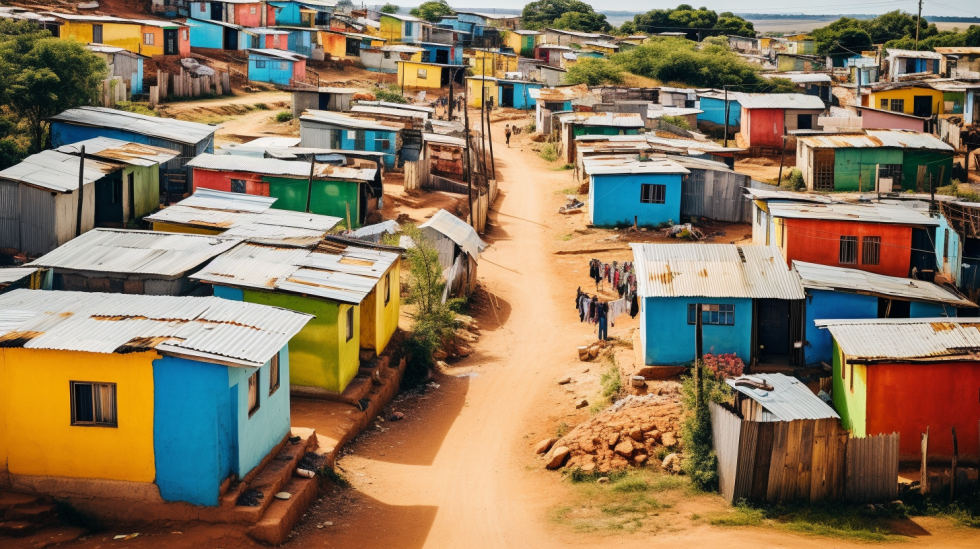In the intricate tapestry of social issues, the link between unfavorable living conditions and youth drug use stands as a stark reminder of the vulnerability that many young individuals face. South Africa, a nation marked by its rich diversity and complex history, grapples with the intricate interplay between socio-economic factors and the prevalence of drug abuse among its youth. This article delves into the nuanced connection between unfavorable social environments, particularly poor living conditions in South African communities, and the propensity for youth to turn to drugs as a means of coping and escape.

1. The Unfavorable Social Environments in South Africa
South Africa, a land of stark contrasts, boasts a robust economy alongside persistent inequalities. These disparities are evident in the vast difference between the living conditions of the affluent and the disadvantaged. Slum areas, overcrowded housing, lack of basic amenities, and limited access to quality education are part of the everyday reality for many South Africans. These unfavorable living conditions form the backdrop against which the issue of youth drug abuse must be examined.
2. The Escapism and Coping Mechanism Nexus
For many young individuals living in unfavorable social environments, drugs may offer a form of temporary relief from the harsh realities they face daily. These substances can provide an escape from the stressors associated with poverty, unemployment, and lack of opportunities. The allure of a brief reprieve from these challenges can be difficult to resist, leading some youth to seek solace in drugs.
3. Peer Pressure and Social Dynamics
Peer pressure plays a significant role in youth drug abuse, especially in disadvantaged communities where social bonds are often tight-knit. In South Africa, where communities are deeply interconnected, the influence of friends and peers can sway impressionable youth towards drug use as a way to fit in or be accepted. The desire to belong and avoid isolation can drive young individuals to experiment with substances, even in the face of potential risks.
4. Limited Access to Positive Role Models and Opportunities
Unfavorable living conditions can limit the exposure of youth to positive role models and alternative opportunities. In communities with high rates of poverty, unemployment, and crime, the scarcity of successful individuals who can inspire and guide young minds can leave a void. Without access to mentors and positive pathways, some youth may turn to drugs as a way to emulate what they perceive as a ‘glamorous’ lifestyle, perpetuated by media and cultural influences.
5. Addressing the Issue: A Holistic Approach
To mitigate the impact of unfavorable living conditions on youth drug abuse, a comprehensive approach is necessary. South Africa must address not only the issue of drug abuse but also the root causes embedded in its social fabric.
a. Strengthening Community Support: Initiatives that strengthen community bonds and provide safe spaces for youth to engage in constructive activities can counteract the appeal of drugs. Community centers, sports programs, and mentorship opportunities can offer positive alternatives.
b. Education and Awareness: Raising awareness about the dangers of drug abuse and equipping youth with life skills to resist peer pressure is vital. Educational campaigns can dispel myths surrounding drug use and empower youth with the knowledge to make informed decisions.
c. Economic Empowerment: By addressing the economic inequalities that contribute to poor living conditions, South Africa can provide youth with a sense of hope and the belief that a better future is possible. Job creation, vocational training, and access to quality education can pave the way for lasting change.
Conclusion
The nexus between unfavorable living conditions in South African communities and the prevalence of youth drug abuse underscores the urgency of addressing socio-economic disparities. As the nation navigates its complex past and strives for a brighter future, tackling the issue of drug abuse requires a multifaceted approach. By focusing on strengthening communities, fostering positive role models, and providing economic opportunities, South Africa can break the cycle of despair and offer its youth a chance to thrive despite the challenges they face. Only through concerted efforts and collaborative initiatives can the nation pave the way toward a brighter, drug-free future for its young generation.
